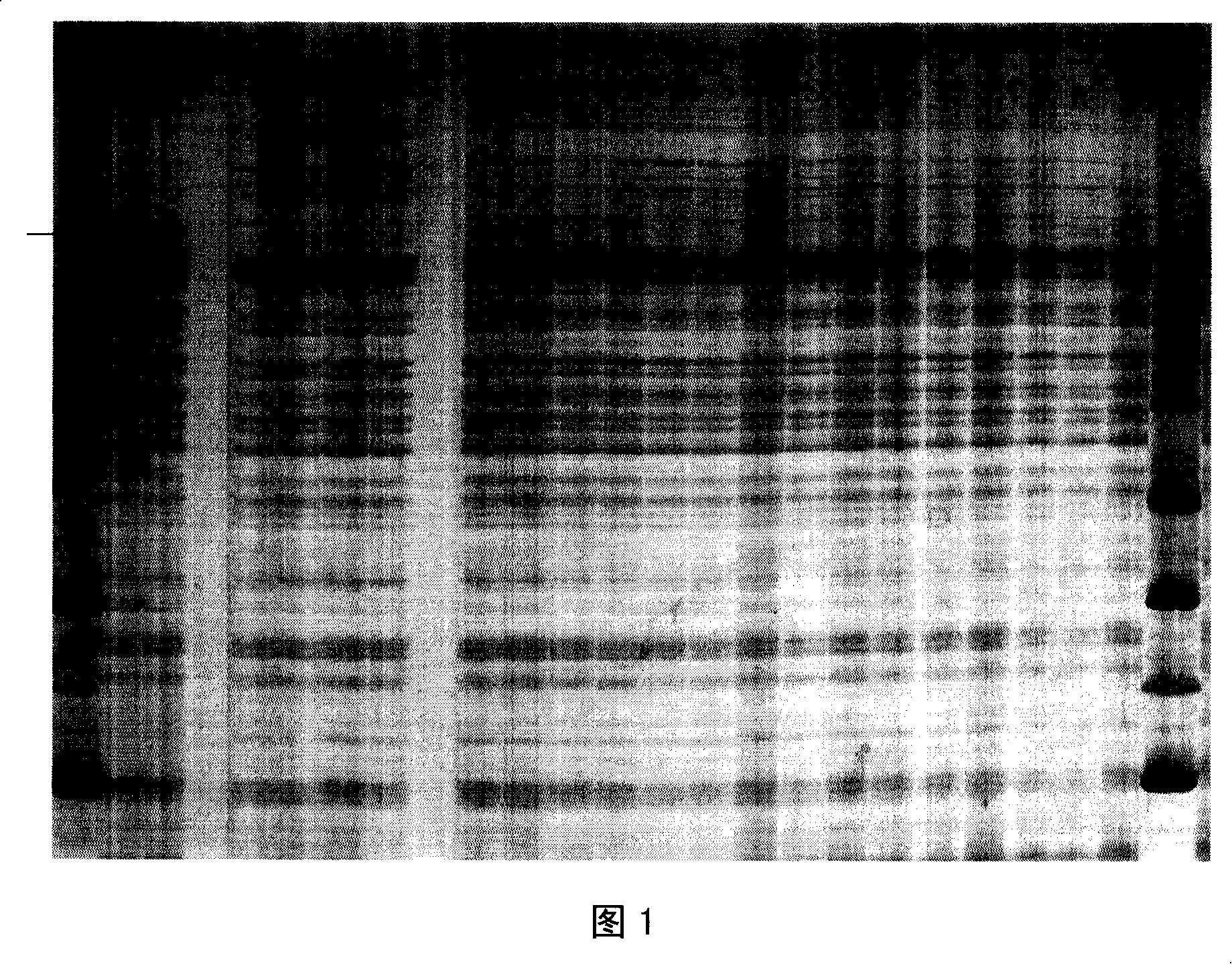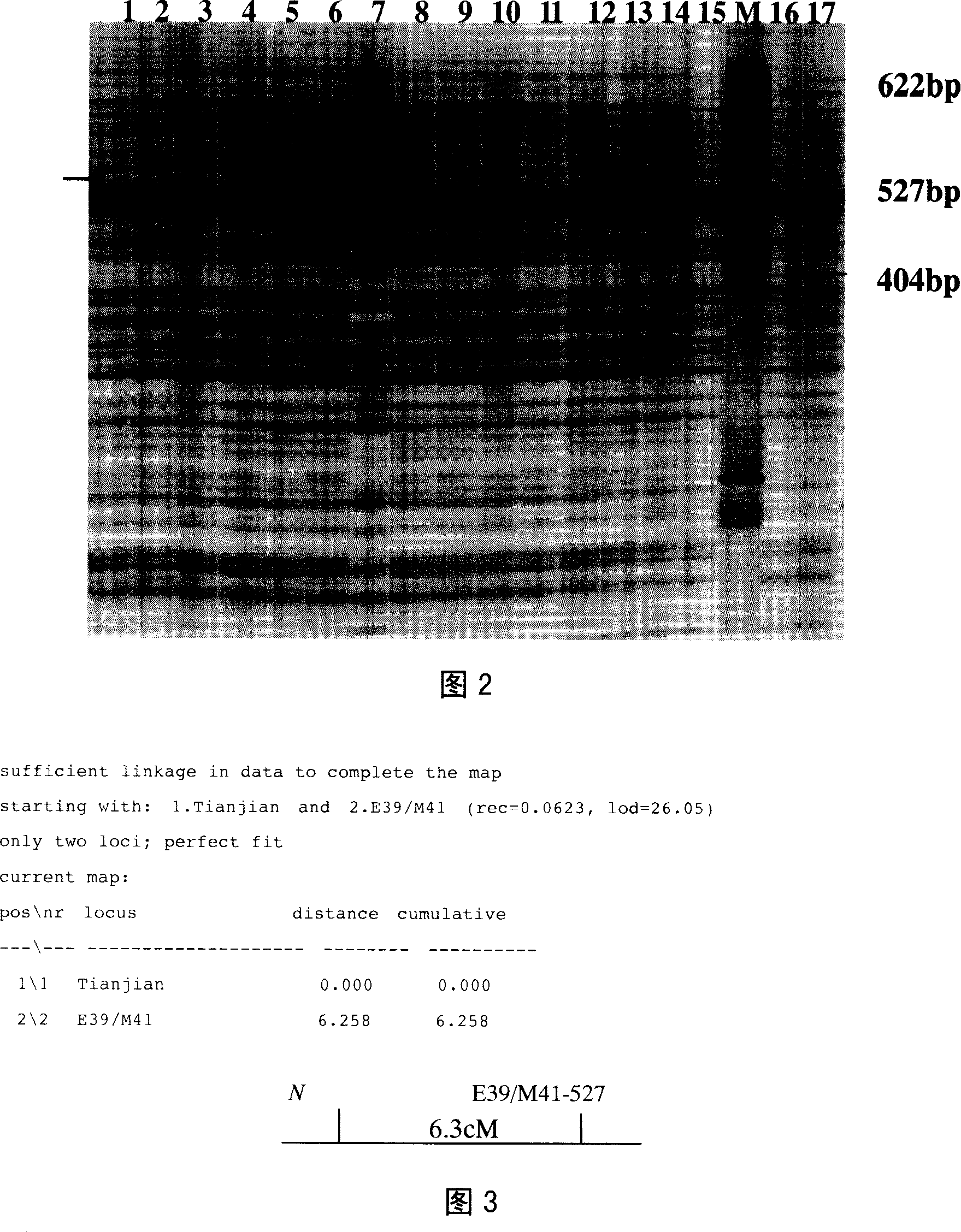Molecule mark for assisting root-knot nematodes N resistant gene selection
A molecular marker and assisted selection technology, applied in the direction of plant genetic improvement, application, recombinant DNA technology, etc., can solve the problems of being easily affected by the environment and low selection efficiency.
- Summary
- Abstract
- Description
- Claims
- Application Information
AI Technical Summary
Problems solved by technology
Method used
Image
Examples
Embodiment 1B
[0043] Embodiment 1BSA (Bulked Segregated Analysis, separation group analysis method):
[0044] The female parent of the analyzed population is the inbred line Carolina Wonder with the "N" gene; the male parent is the susceptible inbred line Solanum; the F1 generation is obtained by crossing the two, and then the F2 generation is obtained by selfing.
[0045] According to the results of disease resistance identification, the F 2 In the population, 10 extremely resistant and susceptible plants with the highest and lowest disease grade index were selected, and 100ng DNA was mixed from each plant to establish a resistant pool and a susceptible pool. Using the DNA of the resistant pool and the sensitive pool as a template, amplify according to the AFLP method to find the differential fragments of the two pools, and then perform AFLP amplification using the individual DNA of the F2 population as a template to explore the distribution of the differential fragments in the F2 populati...
Embodiment 2
[0118] Application of Embodiment 2 Mark E39 / M41-527
[0119]Using the above AFLP analysis method, the 282 individual plants with resistance and sensitivity were artificially inoculated and identified, and DNA marker analysis was performed at the same time, and repeated three times, the results were stable. The number of plants containing the marker was 230, the number of plants without the marker was 52, and the number of plants that did not match the results of disease resistance was 15, with an accuracy rate of 94.6.
PUM
 Login to View More
Login to View More Abstract
Description
Claims
Application Information
 Login to View More
Login to View More - R&D
- Intellectual Property
- Life Sciences
- Materials
- Tech Scout
- Unparalleled Data Quality
- Higher Quality Content
- 60% Fewer Hallucinations
Browse by: Latest US Patents, China's latest patents, Technical Efficacy Thesaurus, Application Domain, Technology Topic, Popular Technical Reports.
© 2025 PatSnap. All rights reserved.Legal|Privacy policy|Modern Slavery Act Transparency Statement|Sitemap|About US| Contact US: help@patsnap.com


